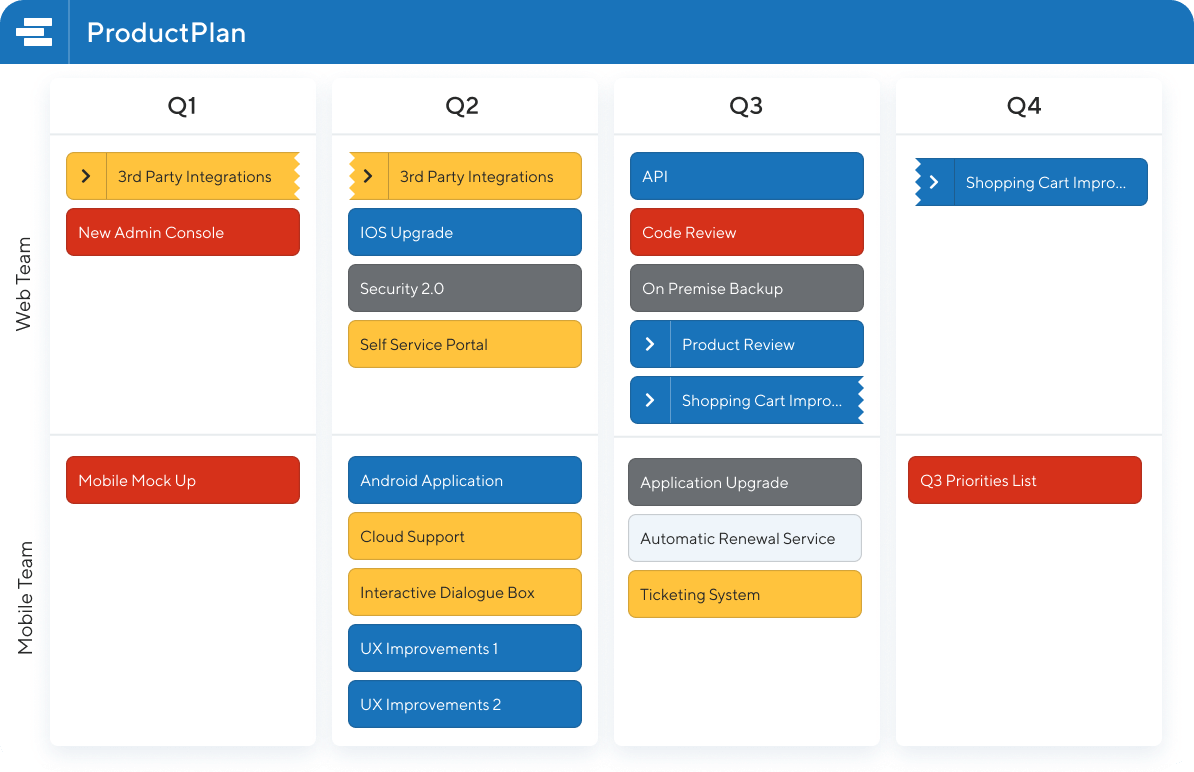Roadmaps aren’t just helpful in product management. They’re useful for a myriad of different roles and departments.
The Role of the Roadmap in the Product Launch
Roadmaps aren’t just helpful in product management. They’re useful for a myriad of different roles and departments, including the product launch.
Your product roadmap serves as your guiding strategic document, communicating transparency, and where you want to take your product eventually for your entire company. The roadmap will notify everyone of any shifts in your product launch strategy.
Various departments will be interested in the different phases and functions of the product launch. So keep the roadmap as updated as your one source-of-truth to increase curiosity, engagement, and efficiency.
You may need to create different versions with varying levels of detail for different cohorts of stakeholders. Because some of your stakeholders will need to be attuned to changes down to the sprint level, but other departments may just need to know by quarter.
Don’t over-communicate dates early on in the project, but provide enough context to keep stakeholders engaged and confident.
As you get closer to your product launch, the roadmap dates must also become more precise. Marketing, sales, and other departments will be scheduling activities based on the roadmap, so it must be accurate. Otherwise, you could end up with launch-related activities occurring too soon or too late. The outcome of these activities might only affect one product, but there will be a lasting effect on the people across all affected departments if something is not going to plan. This can affect all future product launches that you hope to run smoothly. So keep your roadmap as accurately up-to-date as you can.

Jumpstart the Product Feedback Process
Product launches for software products typically happen only after several levels of testing have been completed.
“Regular” employees often don’t get their hands on products until after they’ve been through a formal QA process, have proven capable, and have moved into alpha testing.
Alpha testing is a product’s first round of end-to-end testing, usually done by its employees. When the product clears this level, it’s ready for beta testing, which involves real users but is still before the product’s official commercial release.
But that delay between QA and alpha is precious time. As much usage as possible by your employees will uncover more bugs, reveal enhancement opportunities, and test the product’s scalability. By not waiting until it’s passed acceptance testing, you’ll get the rest of the company more familiar with exactly how the product works.
Additionally, this serves as an opportunity to confirm the product does what it was intended to do. Employee testing verifies the product is heading in the right direction, solving the problems it was designed to address, and adding value for future customers.
